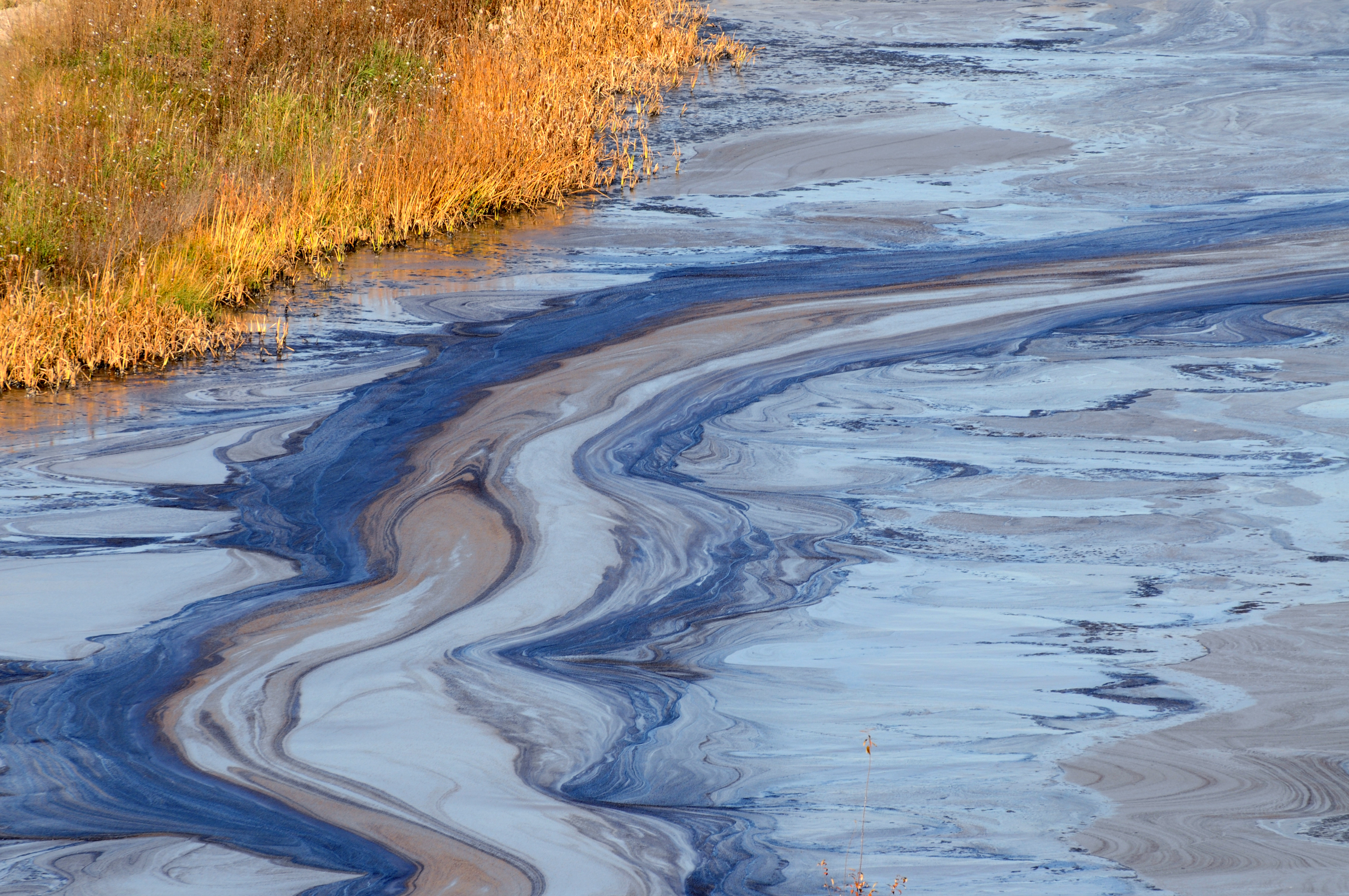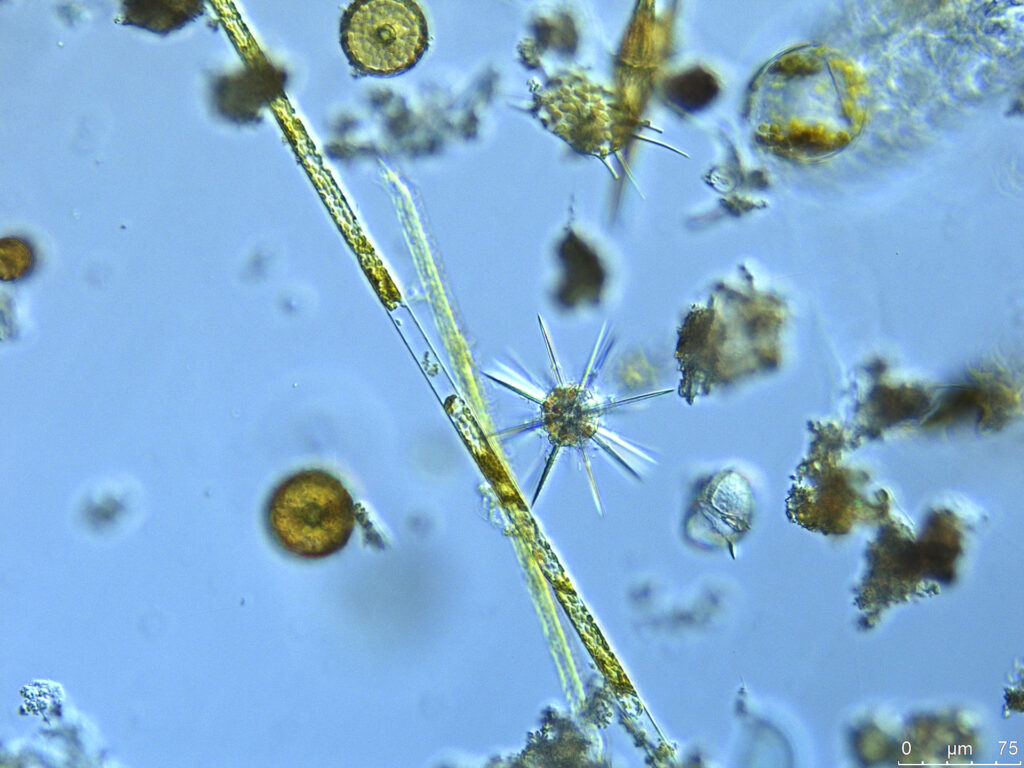Plankton could hold key for understanding link between ocean pollution and human health

Plankton may offer a way to monitor historical marine pollution trends, and could be used to predict trends in human health, according to new research.
Using samples from the CPR Survey, an international team of scientists have suggested that rising levels of manmade chemicals found in the ocean could be used to monitor the impact of human activity on marine ecosystems.
This data could also be used to study the connection between ocean pollution and the rates of childhood and adult chronic illnesses.
Plankton are a diverse collection of tiny organisms found in water. They are a vital food source for many organisms and their activity in the ocean helps regulate the absorption of carbon from the atmosphere to the ocean.
Most plankton are sensitive to environmental changes, which means they are excellent indicators of contamination. Specimens were collected from three different locations between 2002 and 2020. These included the British Columbia Shelf near Vancouver, one of the most populated cities in Canada, the Northern Gulf of Alaska, an ecologically productive area of the North Pacific and the Aleutian Shelf, home to some of the largest commercial fisheries in the United States.
 Plankton are a vital food source for many organisms and their activity in the ocean helps regulate the absorption of carbon from the atmosphere to the ocean. Photo Credit: Marine Biological Association.
Plankton are a vital food source for many organisms and their activity in the ocean helps regulate the absorption of carbon from the atmosphere to the ocean. Photo Credit: Marine Biological Association.
A variety of technologies were used to assess plankton exposure to manmade chemicals; including pharmaceuticals, persistent organic pollutants (POPs) such as industrial chemicals, pesticides, chemicals derived from plastics and personal care products.
This study showed that the levels of POPs and the common antibiotic, amoxicillin have broadly declined in the North Pacific over the last 20 years. The most polluted samples were taken from nearshore areas closest to human activity where terrestrial runoff (excess water from land flows into the ocean) and seafood farming were most present. In these places, there were higher levels and greater numbers of different chemicals found in plankton living in nearshore environments.
Senior Author Robert K. Naviaux, MD, PhD, professor of medicine, paediatrics and pathology at UC San Diego School of Medicine said the findings could explain how exposure to harmful chemicals in the ocean could trigger cell danger response (CDR) in humans, leading to chronic symptoms.
He said: “We were motivated to explore these new methods by the alarming increase in childhood and adult chronic disease that has occurred around the world since the 1980s.”
“It is my hope that the use of our methods by research groups around the world will reinforce the connection between ecosystem health and human health, and provide new tools to monitor how the human chemical footprint has changed over the past century.” The research team hope that in the future, plankton samples from around the world could be used to track and curb pollution that leads to human disease.
 Dr Clare Ostle, Continuous Plankton Recorder (CPR) Research Fellow and Pacific Coordinator from the Marine Biological Association (MBA). Photo Credit: Marine Biological Association.
Dr Clare Ostle, Continuous Plankton Recorder (CPR) Research Fellow and Pacific Coordinator from the Marine Biological Association (MBA). Photo Credit: Marine Biological Association.
Dr Clare Ostle, CPR Research Fellow and Coordinator of the Pacific CPR Survey said: “All of the samples collected by the CPR Survey are preserved and stored in our biological library, this creates a time capsule of what was in the surface waters at that location and time. As new techniques are developing there have been some fascinating discoveries, this pilot study is a great example, and it opens the doors to a potentially very wide-spectrum of detection methods using mass spectrometry that is really exciting”.
Based at the Marine Biological Association (MBA) in Plymouth, UK, the CPR Survey is the longest running and most geographically extensive marine plankton sampling program in the world. Since 1931 almost 300 ships have travelled more than 7.2 million miles towing sampling devices that capture plankton from the ocean.
The survey reached its milestone 90th Anniversary in 2021 and has helped shape scientific understanding about the health of our ocean, and how marine life is changing in response to pressures like climate change.
The findings were published in Science of the Total Environment. Read the full paper here: https://doi.org/10.1016/j.scitotenv.2022.161222

